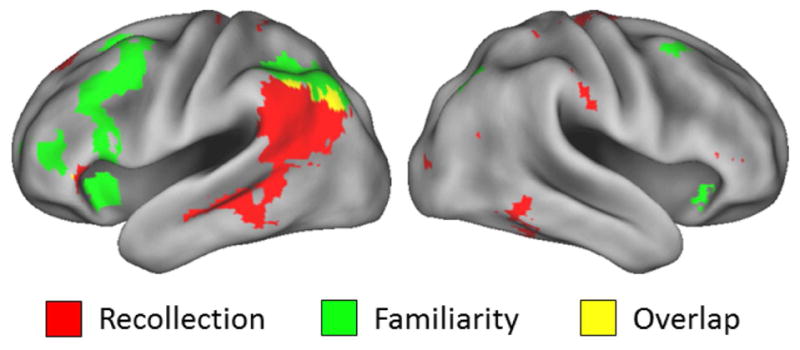Figure 3.

Overlap between recollection and familiarity effects from three independent experiments originally described in King et al. (2015). Experiment 1 (N=36) was a test of associative recognition involving word pairs. At test, ‘intact’ pairs were presented as they were at study, ‘rearranged’ pairs were studied words presented with different words than at study, and ‘new’ pairs were words not presented at study. Recollection was operationalized as the contrast between intact test pairs correctly endorsed as intact vs. intact pairs wrongly endorsed as rearranged. Familiarity was operationalized as the contrast between intact pairs wrongly endorsed as rearranged vs. correctly endorsed novel pairs. Experiment 2 (N=24) employed a Remember/Know/New recognition memory test. Study items were a mixture of words and pictures, and all test items were words. Recollection was operationalized by the contrast between correctly recognized items endorsed as Remembered vs. Known. Familiarity was operationalized by the contrast between items endorsed as Known vs. unstudied items correctly endorsed as New. Experiment 3 (N=28) employed a test of source memory. Test items were studied and unstudied pictures and the requirement was to make a three-way judgment: studied source A, studied source B or unstudied. Recollection was operationalized as the contrast between studied items receiving correct vs. incorrect source judgments, and familiarity was operationalized as the contrast between items receiving incorrect source judgments vs. correctly judged unstudied items. The figure illustrates the main effects of recollection and familiarity (voxel-wise threshold of p<.001), inclusively masked by the simple effect in each experiment (p<.01). Redrawn with permission of the authors.
